 United Kingdom (2016)
United Kingdom (2016)
Reconnaissance Tank/Armored Personnel Carrier – 589 Ordered
Ajax APC, Engineering & Reconnaissance Vehicle
The British Army needed to replace their aging fleet of light reconnaissance vehicles that have been on active service for over 40 years. They also wanted to buy a ‘platform’ armored fighting vehicle. This is a base vehicle that could come in many variants to perform different jobs on the battlefield. They would all share the same basic mechanical parts to simplify the logistics of supplying spare parts, training mechanical engineers and giving them right equipment to maintain and fix these AFV.
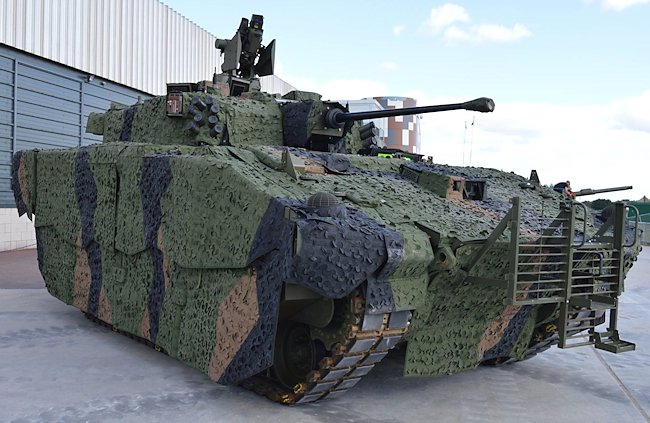
British Army Ajax Reconnaissance Tank (Photo: Ian Wilcox)
The British Government put out this requirement and General Dynamics UK Ltd won the contract over its competition after testing of the prototypes. In September 2014 they were awarded a £3.5 billion contract to deliver 589 AJAX platforms to the British Army. In July 2015, they were awarded a further £390 million contract to provide in-service support for the AJAX fleet until 2024.
At the same time, General Dynamics announced that it is opening a new Armoured Fighting Vehicle Assembly, Integration and Testing (AIT) facility in South Wales.
The Ajax programme was originally known as the SCOUT Specialist Vehicle (SV) programme. It was renamed by the British Army on 15 September 2015 on the same day the first turreted Ajax prototype was unveiled to the press. It was announced that the first British Army squadron will be equipped with Ajax in mid-2019.
The Ajax is powered by a German designed MTU V8 199 TE21 turbocharged diesel engine, that produces 805 hp. The engine is located at the front of the hull to enable the rear of the vehicle to stow equipment and troops. It has a German Renk 256B 6-speed fully-automatic transmission: six forward gears and five reverse gears.
During trials the test vehicle towed an additional 62 tonne weight over 300 km. Versions of the engine are currently used in the Austrian Ulan and Spanish Pizzaro AFVs. Rolls-Royce signed a £57 million deal to build the MTU V8 199 TE21 engines for all the first batch of 589 Ajax vehicles and variants.
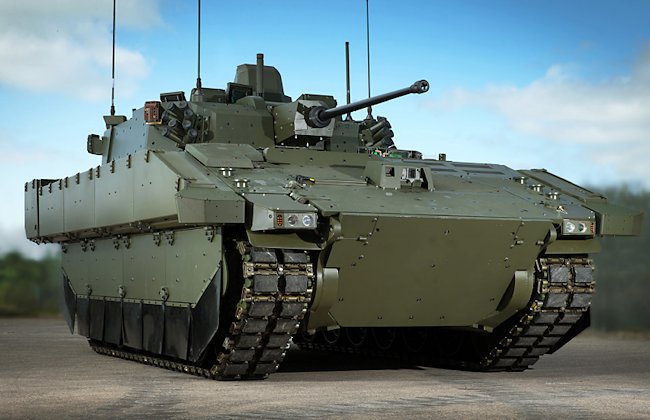
Ajax was originally known as the SCOUT Specialist Vehicle (SV) programme.
Design and Development
The Ajax has an innovative design that gives additional protection against mine blasts. General Dynamics claim that it is the best in terms of protection and survivability in its class. Crew seats are not connected to the vehicle floor but are suspended to provide more survivability after a mine explosion.
The Ajax has a modular armor system that is fitted to the sides of the vehicle. If a section of the add-on armor is damaged it can simply be replaced by attaching a new unit. When more technologically advanced add-on armor is developed over the vehicles lifetime the old armor is taken off and the new armor bolted on in its place
General Dynamics have fitted the vehicle with electronic countermeasures, a laser warning system, an acoustic listening device, a local situational awareness system and placed the ammunition storage units outside the crew compartment.
Ajax has a gross vehicle weight rating of 42 tonne but it has a 2 tonne growth ability for extra equipment to be added to the vehicle without causing a significant impact on its performance.
The 40mm Cannon
The cased telescoped (CT) 40mm cannon will be used in the new Ajax Reconnaissance tank and an upgraded British Army Warrior AFV. The rounds contain both the projectile and the propelling charge unlike the shells used on the British Challenger 2 tank that uses two-part ammunition.
The £150 million manufacturing contract was signed by the British Ministry of Defence (MOD) and CTA International (CTAI), a joint venture between the UK’s BAE Systems and the French company Nexter. Under the terms of the contract, the company will supply 515 40mm Cased Telescoped Cannons. They will also supply initial spares, special tools, test equipment and some early training equipment. The new French Jaguar EBRC Combat and Reconnaissance Armoured vehicle will also be fitted with the CTA International 40mm CT cannon.
The ammunition is contained inside a tube. It does not have a pointed aerodynamic traditional bullet shaped nose cone. The ammunition is loaded automatically sideways to the gun barrel: the cannon is an autoloader. Loading the ammunition in this way saves a large amount of space behind the gun. This allows more ammunition to be stored. These new 40mm tubular rounds are smaller than normal 40mm rounds so more can be carried. This new system has been in development since the 1990s.
At present, there are five types of rounds available for the 40mm CT cannon: armor piercing AP round; training rounds; airburst high explosive rounds, aerial airburst round and a point detonating round for penetrating thick concrete. More are being developed and tested. (BAE Systems info)
The 40mm Aerial Airburst round can be used against drones, helicopters and light aircraft. The gun has a velocity of 900 meters per second and a range of over 4,000m. (BAE Systems info)
The 40mm Point Detonation round is for use against hardened targets. It has a velocity of 1,000 meters per second and can penetrate 210mm of concrete at 1,500m. (BAE Systems info)
The 40mm Airburst round is designed for use against multiple light targets like infantry and soft skinned supply vehicles. It has a velocity of 1,000 meters per second and has an effective area of around 125 square meters. (BAE Systems info)
The 40mm Armour Piercing Round has a velocity of 1,500 meters per second and can penetrate 140mm of hardened steel at 1,500m (BAE Systems info)
Secondary Armament
The Ajax turret is also fitted with a 7.62mm Coaxial L94A1 Machine Gun and 76mm Smoke and Fragmentation Grenade Launchers. Some of the variants that are not fitted with the turret, like the Ares armored personnel carrier is armed with a remotely-controlled 12.7mm machine gun.
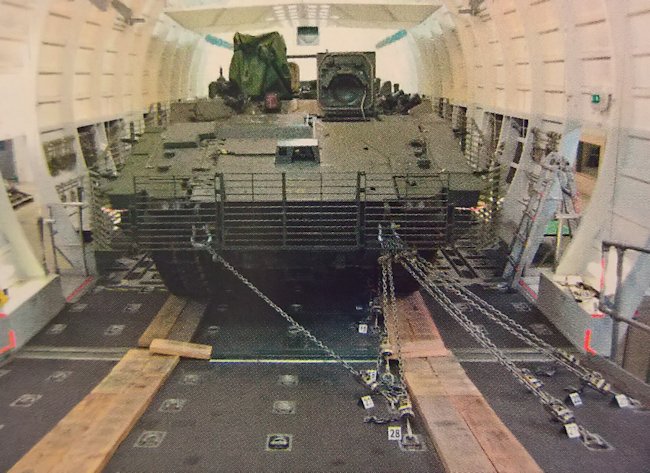
ARES variation of the AJAX undergoing initial air portability trials
Air Transportation
General Dynamics put the Ajax through initial air portability trials in May 2016 at the Joint Air Delivery Test and Evaluation Unit (JADTEU) at RAF Brize Norton. The trials were designed to test the loading of the Ajax into the cargo hold of an RAF C-17A Globemaster III and A400M Atlas transport aircraft. They used the prototype ARES variation of the AJAX during the trials. It was driven into real-size mockups of both aircraft. This enabled staff at the JADTEU to develop custom tie down systems for this new fleet of vehicles so that it can be transported anywhere in the world to support the British Army.
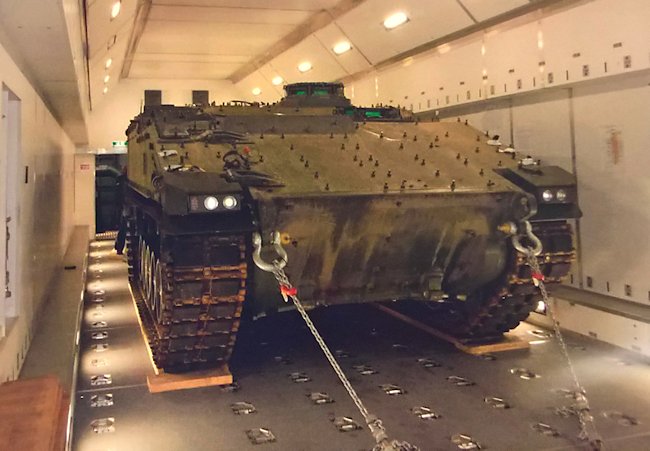
Mock-up cargo holds of the RAF C-17A Globemaster III and A400M Atlas transport aircraft were used to trial the Ajax vehicles ability to be transported to conflict zones by air.
Variations
Ajax Reconnaissance and Strike
The British Government ordered 198 Ajax Reconnaissance and Strike tanks on the 4th September 2014.
Ajax Joint Fire Control
The British Government ordered 23 Ajax Joint Fire Control tanks on the 4th September 2014.
Ajax Ground Based Surveillance
The British Government ordered 24 Ajax Ground Based Surveillance tanks on the 4th September 2014.
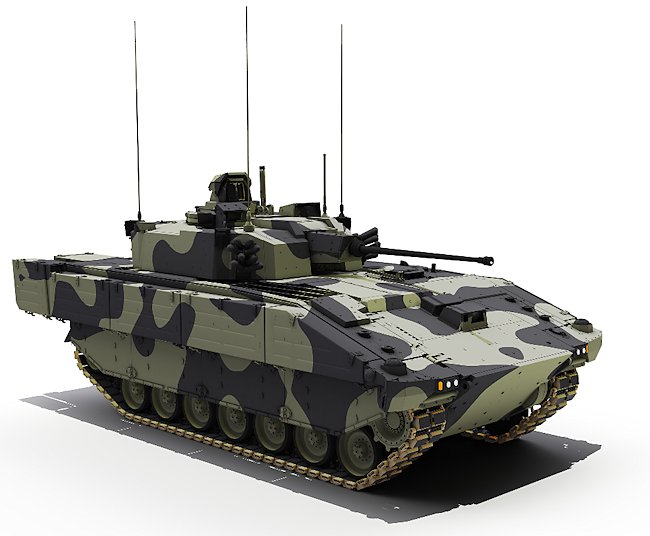
Ajax deployable all-weather intelligence, surveillance, target acquisition, and reconnaissance (ISTAR) capability AFV (Illustration: General Dynamics UK Ltd)
Ares Armoured Personnel Carrier (APC)
The British Government ordered 59 Ares Armoured Personnel Carriers (PMRS) on the 4th September 2014. It has a crew of two: commander/gunner and driver. There is accommodation for up to 7 troops. There is space for specialized and personal equipment of the soldiers. There are internal racks and stowage boxes. More equipment can be stored externally. Troops enter and leave the vehicle via rear doors. Roof hatches can be used for observation, firing and as an emergency exit.
Crew and passengers are seated on mine blast resistant seats. The Ares APC is armed with a remotely-controlled 12.7-mm machine gun that can be fired on the move under armour. The Ares will eventually replace the British Army Spartan FV103 APC. It has a route marking system to enable other armoured fighting vehicles to follow it over known safe ground.
Ares Formation Reconnaissance Overwatch
The British Government ordered 34 Ares Formation Reconnaissance Overwatch Protected Mobility Recce Support (PMRS) varients on the 4th September 2014.
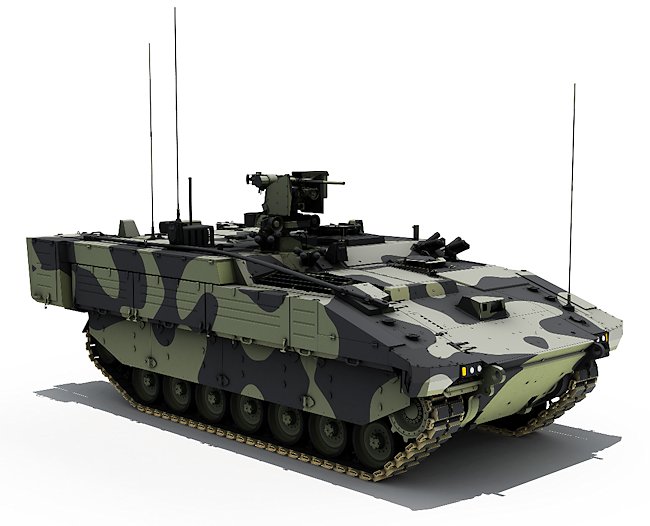
The Ares APC variant will be used to deliver and support specialist troops across the battlefield.(Illustration: General Dynamics UK Ltd)
Athena Command and Control
The British Government ordered 112 Athena Command and Control (PMRS) vehicles on the 4th September 2014. The Athena will process and manage information to provide commanders with information to make informed decisions on the battlefield. It is fitted with computer work stations and map boards. The vehicle has a crew of two but also transports one ‘watchkeeper’ and three PMRS operators, a staff officer and two signallers. It has an auxiliary power unit to provide supply to the command and control electrical systems. It is fitted with the remote weapons system for self defence.

The Athena variant will process and manage information to provide commanders with information to make informed decisions on the battlefield.(Illustration: General Dynamics UK Ltd)
Argus Engineer Reconnaissance
The British Government ordered 51 Argus Engineer Reconnaissance (PMRS) vehicles on the 4th September 2014. The Argus variant will provide timely and accurate engineering information on the natural and man-made environment. It is also expected to obtain relevant information about enemy engineering activities, intentions and terrain.
It has a two man crew and an engineer operator. It is fitted with equipment that measures gap and slope. It has a behind armour demolition detonation ability, a jettisonable front end dozer blade, Battlefield Information Systems Applications (Makefast BISA) and safe route marking equipment. It is fitted with the remote weapons system for self defence.
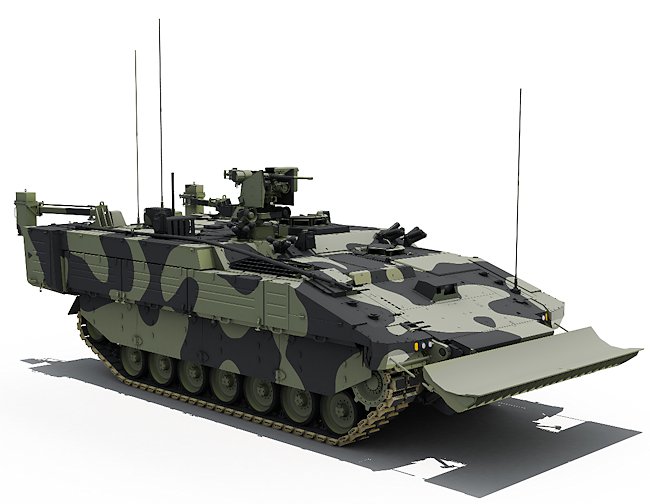
The Argus variant will provide timely and accurate engineering information on the natural and man-made environment. (Illustration: General Dynamics UK Ltd)
Atlas Recovery vehicles
38 Atlas Recovery (PMRS) vehicles were ordered by the British Government on the 4th September 2014. The Atlas variant is fitted with a recovery package that is optimised to provide the most effective means of recovering a casualty vehicle. It has a crew of three. An Earth Anchor to enable it to pull vehicles out of holes and ditches. It is fitted with the remote weapons system for self defence. The main crane is a 300Kn winch and there is a auxiliary 8Kn winch.

The Atlas variant is fitted with equipment designed to recover a knocked out or broken down casualty vehicle. (Illustration: General Dynamics UK Ltd)
Apollo Repair vehicles
50 Apollo Repair vehicles were ordered by the British Government on the 4th September 2014. This variant can be used to tow battlefield damaged vehicles and lift heavy engine power packs. It will be able to tow a trailer containing spare parts and equipment to enable mechanical engineers to work on repairing damaged and defective vehicles close to the front line.
The 5 tonne crane has its own stabilisation system to stop the vehicle falling over when lifting large heavy loads. The crane can be powered independently of the vehicles engine so that it can change its own engine power-pack. It is fitted with the remote weapons system for self defence.

The Apollo variant will be used to tow battlefield damaged vehicles and lift heavy sub-assemblies.(Illustration: General Dynamics UK Ltd)
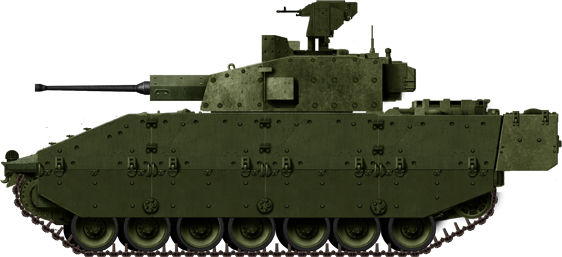
An Attempt of a first redition by Tank Encyclopedia’s own David Bocquelet
Gallery
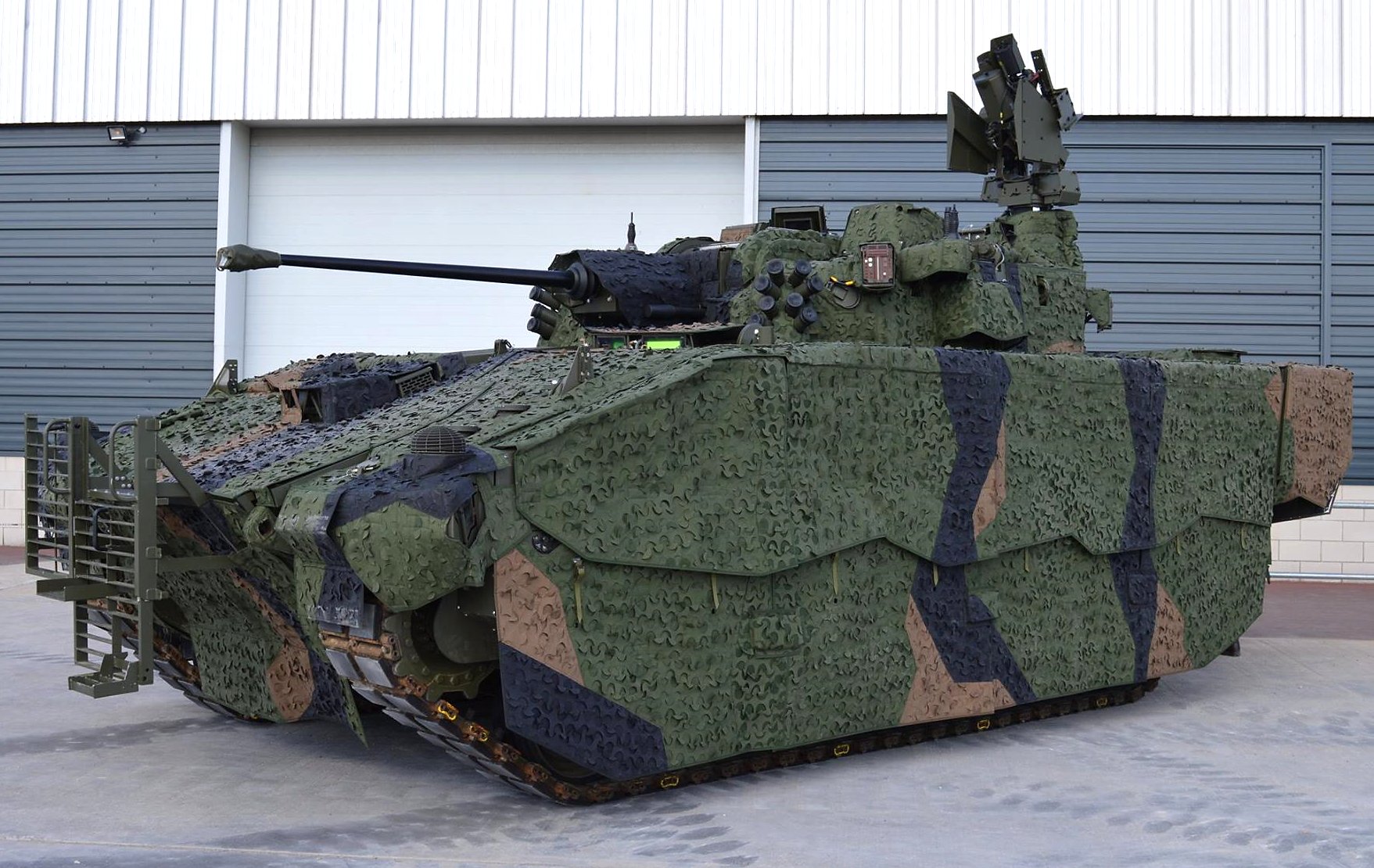
British Army Ajax Reconnaissance Tank (Photo: Ian Wilcox)
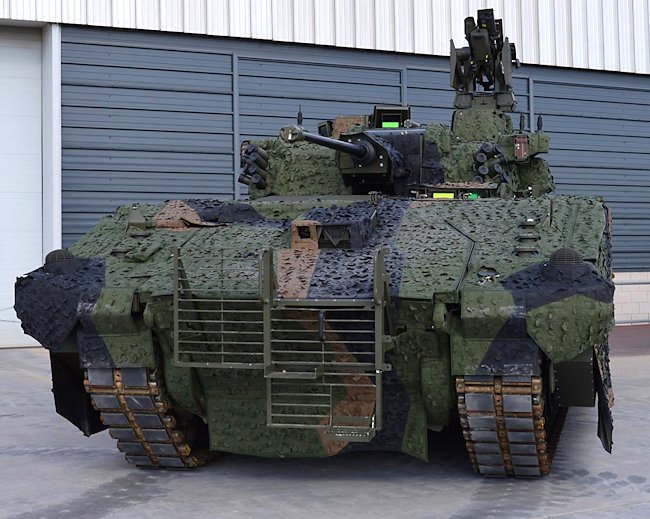
British Army Ajax Reconnaissance Tank (Photo: Ian Wilcox)
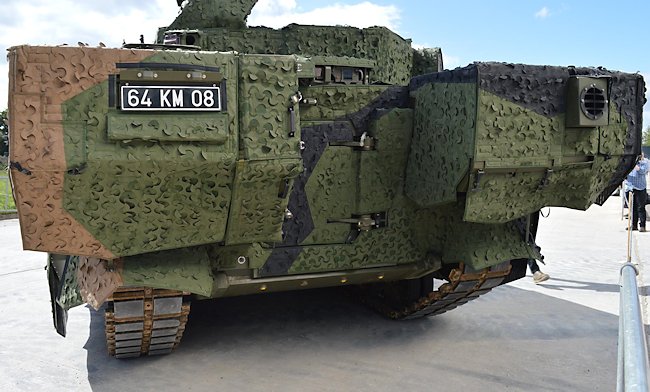
British Army Ajax Reconnaissance Tank (Photo: Ian Wilcox)
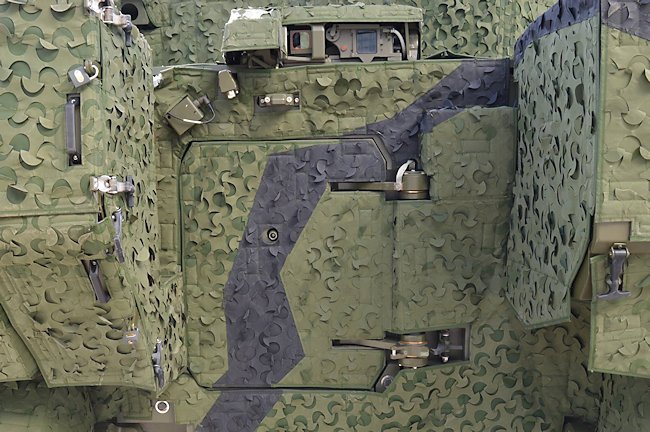
Rear hatch on the Ajax Reconnaissance Tank (Photo: Ian Wilcox)
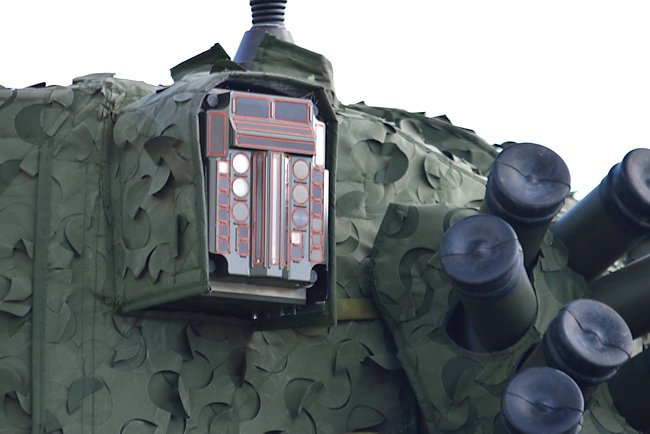
Ajax Reconnaissance Tank smoke dischargers and sensors. (Photo: Ian Wilcox)
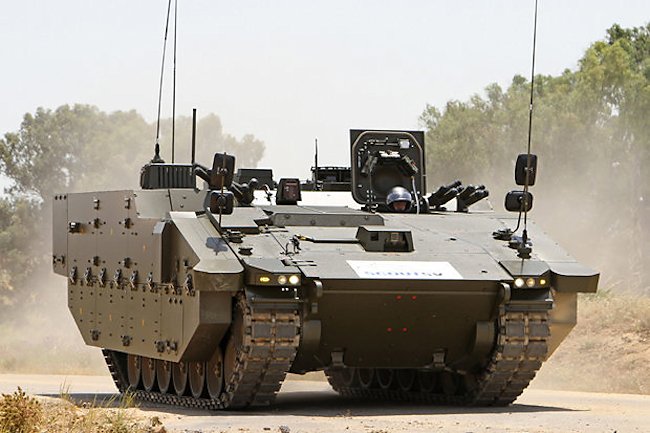
In this photo you can see the top and lower bolt-on side armour system. (Photo: General Dynamics)
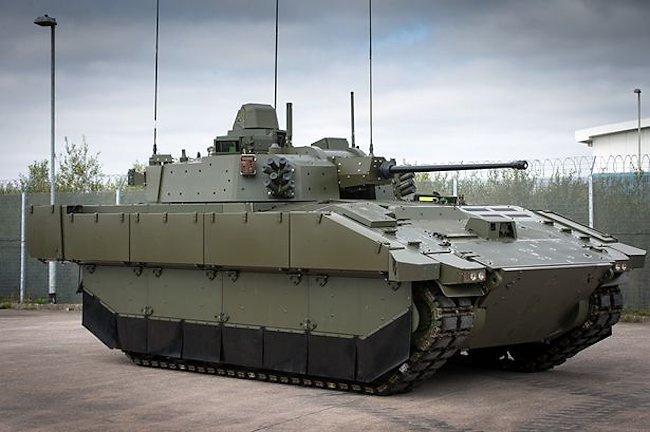
In this photos of an Ajax (Scout SV) prototype, you can see that only the upper side armour bolt-on system has been added. The lower section of the track is covered by a skirt. (Photo: General Dynamics)
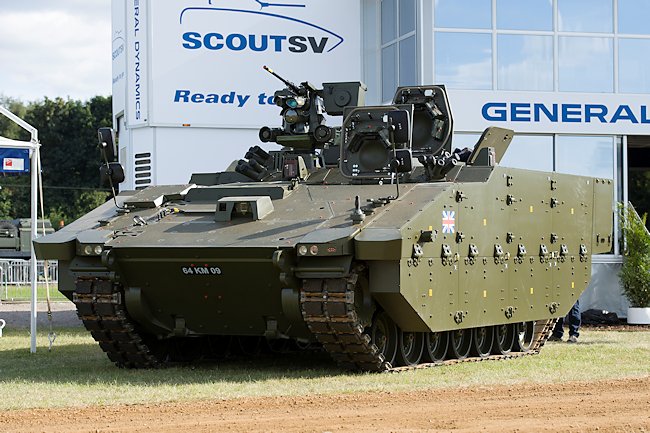
This Ares APC variant is fitted with a double row of bolt-on side armour and a remote controlled 12.7mm machine gun. (Photo: General Dynamics)
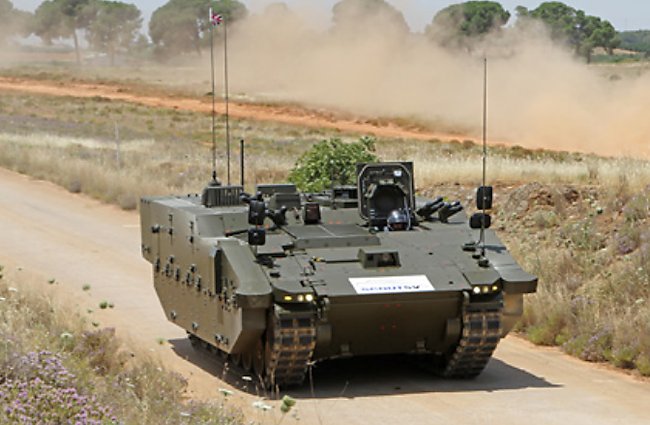
The prototype Ajax was called the Scout SV. This photograph was taken during a demonstration at General Dynamics European Land Systems’ facility in Seville, Spain.(Photo: General Dynamics)
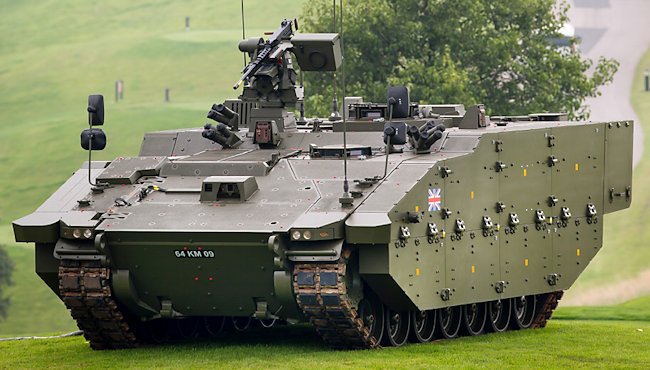
The first pre-production prototype, a Protected Mobility Reconnaissance Support variant (ARES), was showcased at the NATO Summit at the Celtic Manor, Newport in September 2014. (Photo: General Dynamics)
Promotional video
Sources
General Dynamics (UK) Ltd
Specifications |
||
| Dimensions (L-W-H) | 25′ x 11′ x 9’10” ft.in (7.62m x 3.35m x 3m) |
|
| Total weight, battle ready | 42 tons | |
| Crew | 3 (Driver, commander, gunner) | |
| Propulsion | MTU V8 199 TE21 diesel engine 805hp | |
| Top Road Speed | 44 mph (71 km/h) | |
| Range road/off road | 500km | |
| Main Armament | 40mm CTAI cased Telescoped CT40 stabilised automatic cannon | |
| Secondary Armament | 7.62mm Coaxial L94A1 Machine Gun 76mm Smoke and Fragmentation Grenade Launchers |
|
| Ares APC Armament | remotely-controlled 12.7mm machine gun | |
| Armor | Advanced modular armour | |
| Total ordered | 589 | |

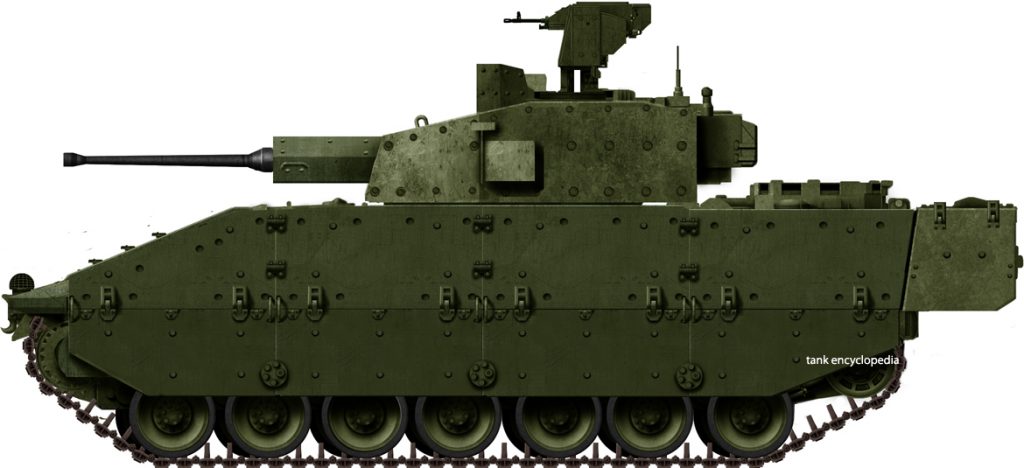
15 replies on “Ajax Reconnaissance Tank & APC”
Well, are there any plans to publish drawing profiles? The 3-D models are nice, but IMHO, the profiles are indispensable.
estoy de acuerdo.
Unfortunately the man who does our illustrations has been going through a busy and tough time in his life. The illustrations will be back, but please bear with us.
While he is busy, will you be interested in hiring anyone else? Good enough for the job obviously, ( So, not me.)
Thanks for the input Hunter. I hope he’s ok and I wish the best for him and all the TE team.
Best regards.
Where are the drawings?
For those of you who play World of Tanks, I am an adept Graphics Designer and will be happy to submit any Historical in-game skins that I make, I also am available to do a few profiles, but I’m not too keen on my style yet. I would also do profiles in as many views(front, top, back, side, etc.) as possible. As a matter of fact, I would suggest at least a front and rear view, for many of these profiles, as it is possible.
I use modelling sites as my main reference, and I fell it would be beneficial, especially to those that use this site as a modelling reference.
Adding opinions and comments from ‘social media’ hardly makes this look like a serious article. I would suggest most of the civilians commenting know little of how this vehicle will operate, British Army doctrine or indeed how weapon systems work in reality. Very much detracts from the website.
Are you going to create a page on the Warrior IFV?
Sooner or later, yes!
Noticed that the articles for the Challenger 1 and 2 seem to have been removed? Are they being reworked and will they be coming back?
They will be reworked sometime in the future.
So, with the time goes by, is there any line drawing published?
The first delivery was scheduled for 2017, while it was stated that the first British Army squadron “will be equipped by mid-2019” so that they could be deployed by the end of 2020.
This was delayed due to design and testing problems. Test crews were required to wear noise cancelling headphones and be checked for hearing loss at the end of operations and the vehicles were unable to reverse over obstacles more than 20 centimeters high. As of March 2021, the British Army had taken deliveries of the Ares variant, whilst 12 Ajax variants are going through acceptance testing. In June 2021 it was revealed that trials of Ajax variants were halted from November 2020 to March 2021 due to excessive vibration and noise, leaving crews suffering from nausea, swollen joints and tinnitus. Test crews were then limited to 105 minutes inside and 20 mph (32 km/h). The excessive vibration while moving was also damaging electronic systems and preventing armament from stabilising. Suspension issues on the Ajax variant mean turrets could not fire while moving. The hulls were of inconsistent lengths, and had non-parallel sides, which means the vibration problems do not manifest in a uniform manner making it exceedingly difficult to determine if vibration is from a fundamental design problem or build quality failures.
A leaked report doubted whether the Ajax Armoured Vehicle programme would be delivered on time and within budget, and suggested that there was a real risk that the vehicles’ credibility would be questioned by troops, and morale impacted. General Dynamics UK refused to comment on the report.
In early 2021 MPs on the Defence Select Committee issued a report critical of the state of the Army’s armoured vehicle programme—including Ajax—which had spent hundreds of millions of pounds with little to show for it. Some defence experts questioned whether Ajax would ever enter service, calling it “the Army’s Nimrod MRA4″ (an upgrade of which never entered service and was scrapped in 2010 at a cost of £3.8bn).
The Times reported that as of mid-June 2021 the problems with noise and rough handling were so serious that all trials involving the Ajax had been suspended. The paper quoted Francis Tusa, editor of Defence Analysis, concluding that the British Army, “are spending good money after bad for something that is arguably unfixable.” On 20 July 2021, Minister for Defence Procurement Jeremy Quin told the Defence Select Committee that “we cannot be 100% certain that [the salvation of the programme] can be achieved”.
What is the current state of the project as of May 2023